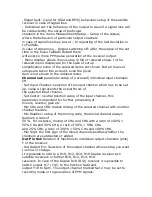
one or more of the E4 EX expanders connected to the receiver Ext
port.
Bidirectional Signal Loss Alert:
An alarm will sound if you lose the bidirectional telemetry data
communication between your transmitter and receiver. This alarm
simply means that at the given instant there is no data available from
the telemetry sensors or other equipment connected to the receiver
input (Ext. port). Note: In this situation you still have full control of
your model as the control signal is stronger than the telemetry signal.
If this alarm sounds, you should reduce your aircraft’s distance from
the transmitter.
Communication with the DUPLEX Receiver with aid of the
JETIBOX:
The JETIBOX can be connected to the receiver in two ways:
1. Direct connection between the JETIBOX and the receiver
Plug one end of the servo type connector from the interconnecting
cable (enclosed in the JETIBOX package) into the receptacle marked
- (found on the right side of the JETIBOX) and plug the other
end into the receiver port marked “Ext.” Next, connect a power supply
to the receiver (see power supply) or connect a power supply port of
the JETIBOX.
NOTE: DO NOT CONNECT POWER TO BOTH DEVICES AT THE
SAME TIME.
2. Wireless connection between either the JETIBOX Profi or
JETIBOX emulator in your Jeti transmitter and the receiver
To communicate with the JETIBOX emulator in your transmitter,
simply turn on the transmitter and receiver then go to: Menu
>System >Jetibox.
The wireless connection with a receiver is only possible when the
receiver is in Normal mode. If you change the receiver from Normal
mode to Clone mode, the receiver can no longer be “seen” wirelessly
and all wireless communication will stop. The receiver must be
connected directly (wired connection) to a JETIBOX in order to be
changed back to normal mode.
It is possible to check or change any receiver parameters at any time,
even while your model is in operation, so you must do so very
carefully so that you do not accidentally make a change which results
in a crash. As always, it is advised to remove the propeller or rotor
blades during any setup changes as added protection against any
damage or injury which could be caused by an unintended motor start.





























